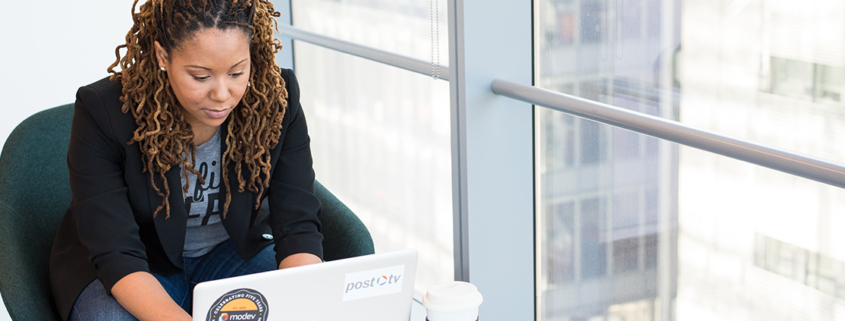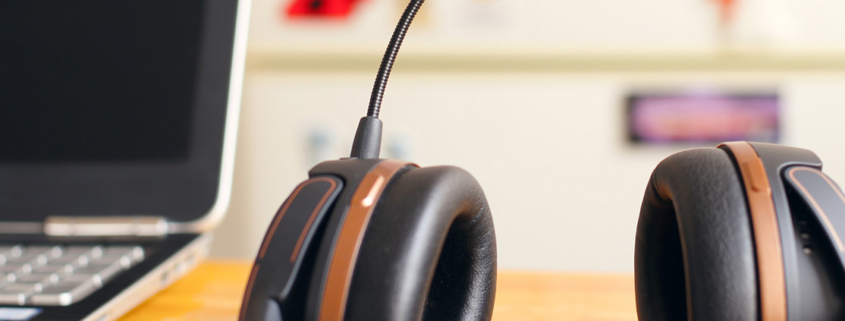Coronavirus & Working from Home: Part 8 – What Not to Do
What Not to Do When Working from Home
Mistakes we’ve witnessed and how to avoid them
Over the past seven posts in our Coronavirus & Working from Home series, we’ve shared our insights for effectively working from home, covering childcare, technology, security, routines, flexibility, and distractions. As many of us try to cope with working remotely for the first time, however, and despite these best practices, the reality is that mistakes will be made.
Over the years we’ve worked with a lot of other companies whose employees also work from home. For this post, we asked Alliances Management staff to share the most glaring blunders they’ve ever seen or heard about.
Here are some final recommendations in this series based on the pitfalls we’ve witnessed over the years.
Unintentional video conferencing
Be careful not to hit the “share video” button when you just woke up to make that 5 a.m. call or just came inside from a sweaty run. If you’re using a new application for a call, show up several minutes early to the meeting and get familiar with the settings so your disheveled face doesn’t accidentally show up on everyone’s screens. A sliding webcam cover is another way to ensure you’re only on video when you want to be.
Pro tip: if you use Zoom for virtual meetings and want to use the video feature but aren’t looking your best, there’s a “Touch Up My Appearance” filter to help you look more polished even if you’re still in your pajamas.
Avoid awkward virtual meetings
- If you just woke up, speak to someone for at least 5 minutes before opening a call. Others can tell when you haven’t shaken off that “just woke up” voice.
- Make sure your Bluetooth is disconnected if you are using your phone, so that when your spouse leaves to take the kids to school, the car does not pick up the conversation, so that they can hear your meeting and you can’t.
- Don’t share your screen until you’re absolutely ready—participants may learn way more than they wanted to about you. On a related note, don’t multitask when you’re sharing your screen, or people will see your email, Facebook feed, and more. Chat applications like Skype often have “Do Not Disturb” features you should turn on when you’re presenting so you don’t receive notifications, and collaboration software like Microsoft Teams allows you share only what you choose to.
- Get used the fact that there will always be technical issues. The trick is being prepared to deal with them.
- If you’re not a techie (and even if you are), learn how to check and adjust your mic. You don’t want to be “that” person who never said a word on the call because you couldn’t figure out how to get your mic working.
- When there’s an echo on the call and you’re certain it’s one of the other 20 callers, check it out and mute your own microphone. Most likely, it’s you!
- Make sure your room is lit when you do a video chat. It’s creepy if you’re totally in the dark.
- Always double check to make sure you actually hit the “mute” button; otherwise, your sneaky bathroom breaks won’t be so sneaky, and everyone will overhear you shouting at your kids to shush. If your connection is wonky and you think you dropped a call, check again before you start swearing about your internet provider. Your coworkers can often still hear you, even if you can’t hear them.
- It’s also important to make sure that you are NOT on mute when you’re wondering why no one is responding to your very valid points.
When kids, pets, and significant others are your coworkers
- Make sure to discuss with your significant other that the timing of your daughter’s birthday party—with her 15+ friends—doesn’t start until after your last call of the day (or that they don’t play pin the tail on the unicorn just outside your office window).
- Be sure your significant other uses her quiet voice when singing “Let It Go” in the shower after her mid-morning workout.
- Teach your children to not use the bathroom right outside your office during morning calls, or at the very least, to shut the door.
- Always close your laptop if you’re leaving your desk, even if it’s just to get a drink in the next room. Guess who loves to hang out on your warm keyboard deleting all your email? Your roommate’s cat.
- If your daughter has a habit of bursting into your office to ask for something exactly at the moment that you unmute yourself, a lock on your office door might be appropriate.
A Few Final Recommendations
- Always set two alarms. It’s easy to take it too easy in the morning since you’re already at work.
- Don’t sit hunched over your computer on your couch all day long; your health and productivity will suffer.
○ Change up where you’re working. A huge benefit of being at home is being able to change up your environment when you’re feeling stagnant. If it’s warm, sit on the porch outside if you’ve got one.
○ Take breaks often, walk a little and stretch.
○ Stand up when you’re working if you can. Try setting an alarm on your phone to help you get into a standing/sitting routine–30 minutes standing and 10 minutes sitting works for us. - Review your chat messages (e.g. on Skype) before you hit “send”.
- Learn the right acronyms for emojis before you hit “send” in Skype 😉.
- In the absence of a physical workspace where you can chat a bit and catch up with your coworkers’ lives, set up a virtual “watercooler” group to share pictures and goings-on so you don’t feel too isolated from your colleagues.
[About this Series: Since its inception in 2006, Alliances Management (www.am.consulting) has operated as a 100% virtual, distributed workforce; today its staff members work in a dozen U.S. states, Europe, and the Philippines. In light of employers reconsidering face-to-face work because of the proliferation of the novel coronavirus (COVID-19), we decided to write a multi-part series to share some of our thoughts and best practices about remote work. Read the entire series here.]










